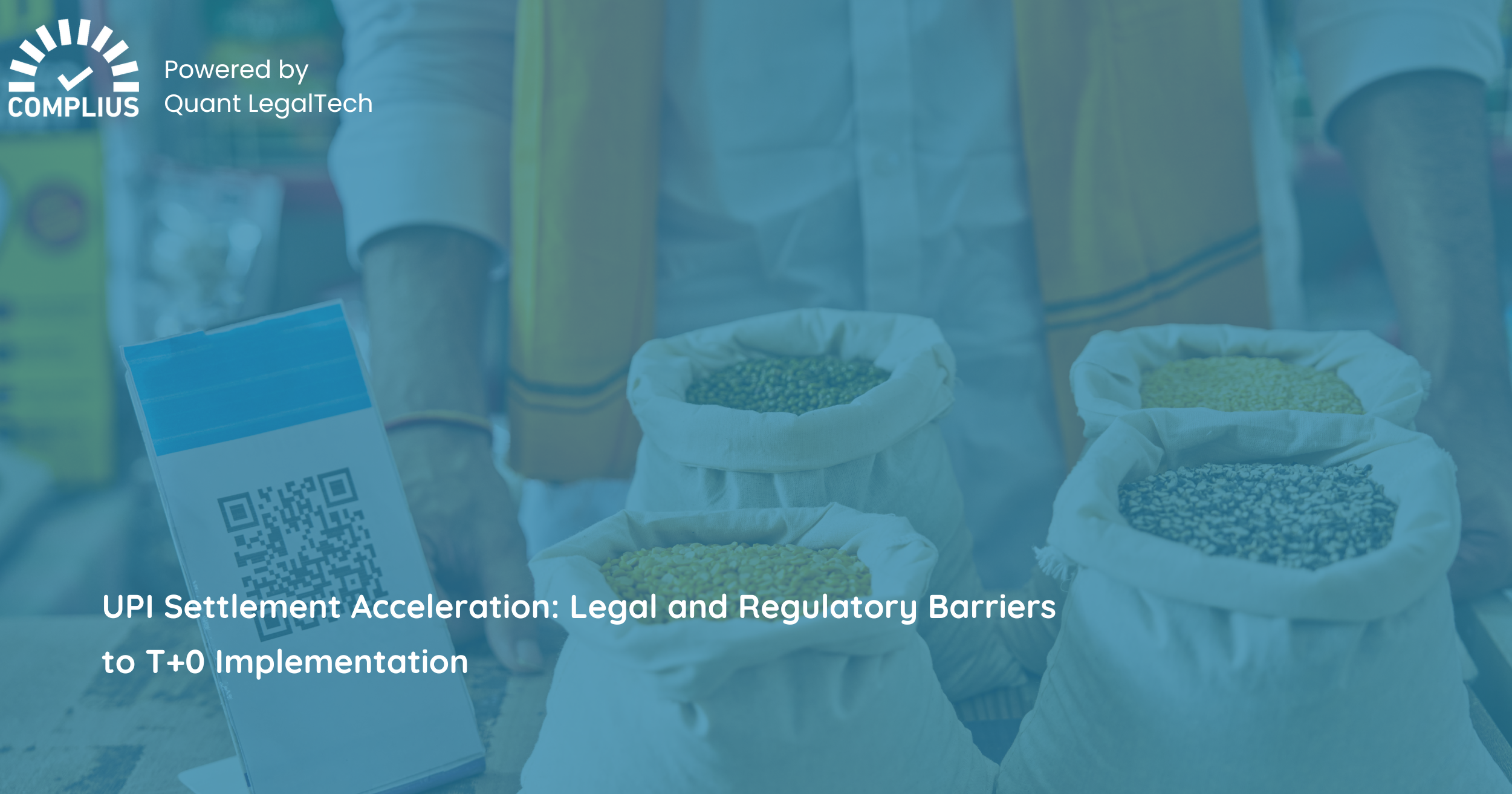Choose another country or region to see content specific to your location
UPI Settlement Acceleration: Legal and Regulatory Barriers to T+0 Implementation
May 03, 2025

In recent years, India’s digital payments ecosystem has undergone a remarkable transformation, thanks in large part to the Unified Payments Interface (UPI). What started as a government-backed innovation aimed at financial inclusion has now become the backbone of India’s digital economy. With over 13 billion transactions processed monthly, UPI is now setting its sights on the next big frontier – T+0 (same-day or instant) settlements.
While this shift may seem like a natural progression in a world that thrives on real-time gratification, it raises several legal and regulatory challenges that need thoughtful examination.
What is a T+0 Settlement?
In financial terms, T+0 means that a transaction is settled on the same day it is initiated. This is a significant leap from the traditional T+1 or T+2 cycles, where there’s a built-in delay for processing and verification. T+0 settlement offers benefits like faster liquidity, improved operational efficiency, and enhanced user trust.
However, the legal machinery governing payment systems is not always as fast as the technology that supports them.
The Legal and Regulatory Roadblocks
1) Regulatory Realignment under the PSS Act –
The Payment and Settlement Systems Act, 2007 (PSS Act) is the cornerstone legislation governing digital payment systems in India. Currently, the frameworks under the RBI and NPCI are optimized for deferred settlements. Moving to real-time would require a review of RBI circulars, operating procedures, and possibly even amendments to existing regulations.
2) Finality of Settlement –
A key legal principle in any payment system is settlement finality- the point at which a payment is irrevocable. With T+0 settlements, the window to detect fraud or erroneous transfers shrinks dramatically.
3) KYC and AML Compliance –
Faster settlement doesn’t reduce the regulatory need for Know Your Customer (KYC) and Anti-Money Laundering (AML) protocols. In fact, it makes compliance more urgent and more challenging. Real-time processing limits the ability of financial institutions to conduct due diligence. Stronger, tech-enabled compliance mechanisms may be needed, but these will also need clear legal validation.
4) Dispute Resolution and Liability –
In the event of a failed or incorrect transaction, what legal recourse does a user have if the settlement is already complete? The current legal architecture for consumer protection, including RBI’s Ombudsman Scheme, may not be swift enough for real-time environments. There is a need for speedier legal redressal frameworks that match the pace of T+0 systems.
5) Infrastructure-Driven Legal Risks –
Even if real-time infrastructure is technically viable, legal risks arise when banks or intermediaries face system downtimes or delays.
6) Cross-Border and Jurisdictional Complexities –
With initiatives like UPI going global (e.g., tie-ups with Singapore, UAE), T+0 settlements across borders raise questions of jurisdiction, enforceability, and legal harmonization. International legal cooperation and bilateral agreements will be necessary to ensure that settlements are recognized and protected across jurisdictions.